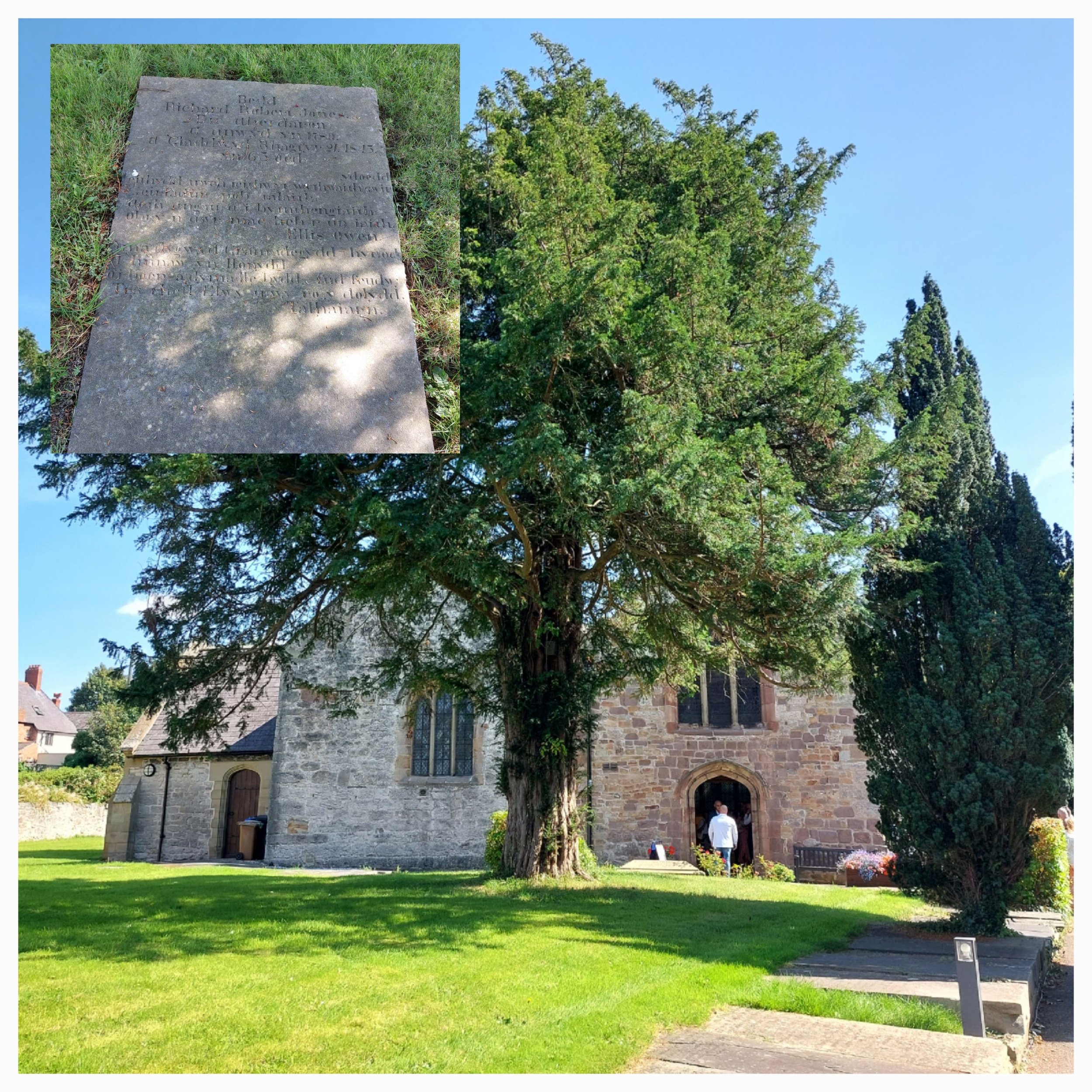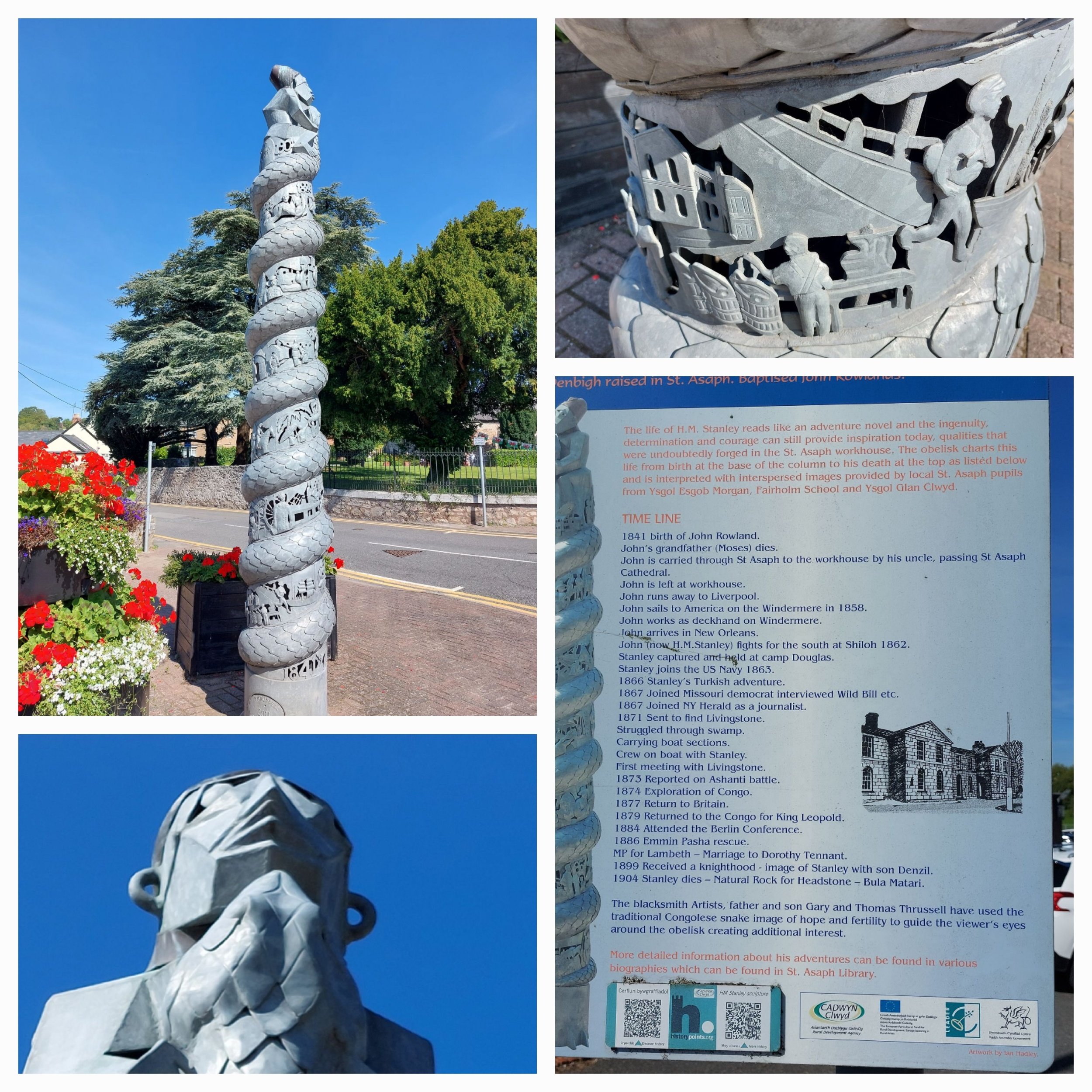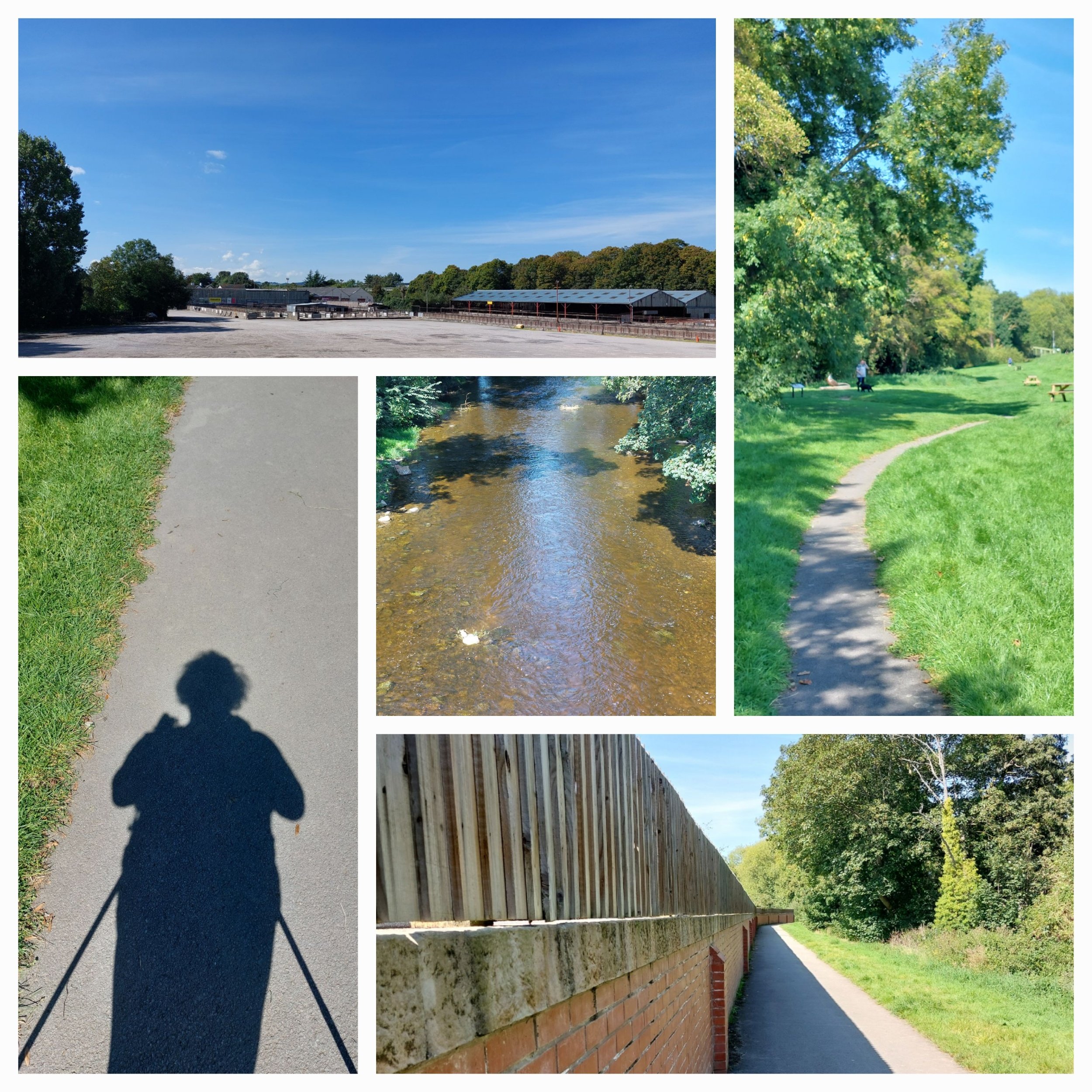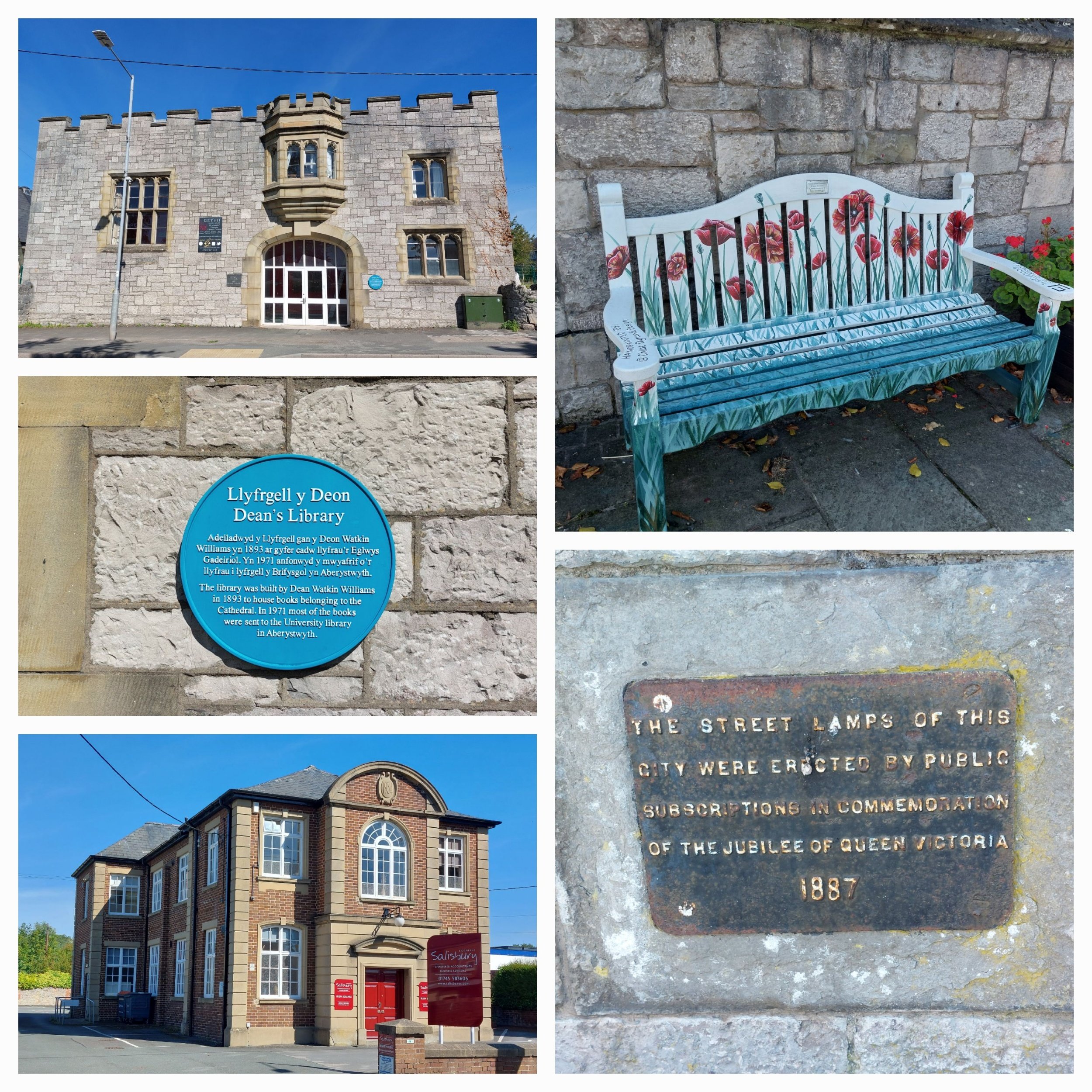Strolling in St Asaph
St Asaph
Sunday 3rd September 2023
St Asaph is a city on the river Elwy in Denbigshire, North Wales. The city is believed to have developed around a sixth century monastery founded by Saint Kentigern, with the Cathedral being built on the same site in the twelfth century, in the thirteenth century it was almost burnt to the ground. Historically St Asaph was regarded as a city as it held the seat of a medieval cathedral and diocese, however actual city status was not granted until as late as 2012 despite several applications!
St Asaph Cathedral
Interesting facts I discovered are that St Asaph is the birthplace of both Greg Davies (comedian, writer and presenter of Taskmaster) and the composer Paul Mealor (famed for his 2011 hit ‘wherever you are’ performed by the original Military Wives Choir and many other choral pieces)
The city still has a thriving Cattle Market with livestock being sold twice a week.
I started the City trail at the Cathedral and Steve’s blog will give you a comprehensive view on that, so I just walked around the outside pausing occasionally to gawp at gargoyles! The trail then highlights the Translators’ Memorial in the Cathedral grounds. A splendid gothic tower installed by the Victorians it features eight statues of the scholars who translated the bible into Welsh. This includes Bishop William Morgan whose bible from 1588 helped save one of Europe’s oldest languages from oblivion. The Cathedral has an original copy of this bible on display and Bishop Morgan is buried underneath the high altar.
Boo!
Translators Memorial
A small, but well formed city trail!
Next on the trail just down the High Street is a house from 1745 adorned with a blue plaque which indicates that it was the birthplace of brothers George and Felix Powell whose song ‘pack up your troubles in your old kit-bag’ became hugely popular during the Great War. A little further down and I find the Barrow Almshouses built in 1680 for ‘eight poor widows of good character’.
Almshouses and other interesting building adornments down the High Street
Across the road I find the parish church of St Kentigern and St Asa (Asaph), but I’m unable to go inside as a Baptism family are gathering (not sure if it is before or after the event!) The current building was built on top of older foundations in 1524, soon after being extended into the typical double-naved Denbighshire style. Sir George Gilbert Scott (architect) added the porch, bellcote and vestry in 1872.
Standing in the church grounds looking for the next part on the trail a lady came to ask me if I was OK, so I told her I was looking for the gravestone of Dic Aberdaron (real name Richard Jones) the uneducated, nomadic, long haired son of a boat-builder died in St Asaph by chance. He spent his life wandering barefoot around England and Wales, carrying a harp, many books and his pet cat. He could speak 14 languages including ancient tongues of the Middle East and had spent years writing a Welsh-Hebrew-Greek dictionary only for it to remain unpublished. The National Library of Wales in Aberystwyth has the only copy. The kind lady said ‘Is that the linguist? I should probably know where that is’ By which time I had found it, on my return to the path she was keen to know where I was headed next and after that! She even popped up from the car park to share her wisdom!!
Next on the trail just across the road is an obelisk dedicated to the life of Henry Morton Stanley, he of ‘Dr Livingstone, I presume?’ fame. The Victorian explorer was born in Denbigh and raised in the St Asaph workhouse, he escaped by running away to sea and served on both sides in the American Civil War. He tracked down the Scottish missionary David Livingstone in deepest Central Africa whilst working as a journalist. He later planned to harvest the natural resources of the Congo with King Leopold ll of Belguim. Scenes from his controversial life spiral around the obelisk topped with a Congolese effigy. The kind lady popped up here to tell me the building of the obelisk was controversial! (She didn’t expand on why!)
I’m now heading towards the river Elwy which flows through St Asaph, the impressive 5-arch limestone and sandstone bridge here is a scheduled monument, built in 1770, it spans 65 metres – wide enough to cope when the river bursts its banks. In 2012 river rose to just 4 inches below the top of the arch where the path goes through (see photo) 1 life was lost, 322 houses and 32 businesses were flooded.
The last stop on the trail is Roe Plas, an area next to the river where lots of folk walk their dogs amongst the trees lining the river. Apparently the river Elwy is abundant in trout, salmon and bullhead attracting kingfishers, herons and otters, none of which I spied today. Also home to the rare species of timber – the Black Poplar (didn’t read that part until afterwards!)
Cattle Market- Top Left, Roe Plas- Top right
And that was the City Trail completed, so I decide to Nordic Walk the 5km loop I had plotted earlier, but backwards! I was near the end of the walk rather than the start! The first part of the route takes me alongside the river, but presumably due to flooding and access it is a tarmacked, raised path a little removed from the riverside edge, so you have to make forays to the little stony beaches that crop up from time to time. The route passes the extensive cattle market site and after crossing a road becomes a grassy, but still raised path. It’s a warm day and the sky is really blue with no clouds and so I seek shade down by the riverside and end up making a stone stack on the waters edge. I could literally spend hours making stacks, but I need to carry on! I eventually cross over the river via a footbridge to continue my journey back to St Asaph. On the other side of the river there’s some really hefty concrete blocks, barbed-wire fencing and ‘Private-Keep out’ signs that aren’t very picturesque or welcoming! I’m following a Public Footpath and ignore the ‘no through road’ sign and walk through a farm crossing a style into a field full of sheep. I continue through a couple more fields pausing under the shade of a massive oak tree to scoff my packed lunch (and chat to my son who has phoned). After the next style I come into a more open field from which are some fantastic views of the surrounding rolling hills! Then I’m onto a narrow lane which takes me all the way back into St Asaph finishing by the Cathedral.
Couldn’t resist stacking stones on a riverside beach!
Beyond the river
There are a couple of interesting buildings opposite the Cathedral, one is a building that looks like a castle which turns out to have been built in 1893 by Dean Watkin Williams to house the books belonging to the Cathedral. In 1971 most of these were sent to the University library in Aberystwyth. It’s now a fitness centre. The other building that caught my eye looked to have been a chapel or hall, but after a bit of research it turns out it was purpose built in 1934 as a flagship office for the St Asaph Rural District Council. The name of the building ‘Irish Square’ is a historical reference to the low-quality housing that had previously occupied the site where a large number of Irish labourers lived, who had come to work on road and rail construction in the late 1800’s.
The Blue Plaque says “The Canonry was built on a historic site, Owain Glyndwr burnt down a hostelry there in 1402 and an ecclesiastical residence was erected in its place.” I just liked the door!
I liked St Asaph, it’s views and surrounding countryside were excellent!















